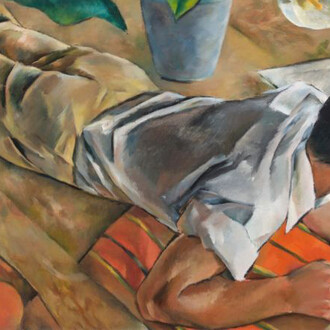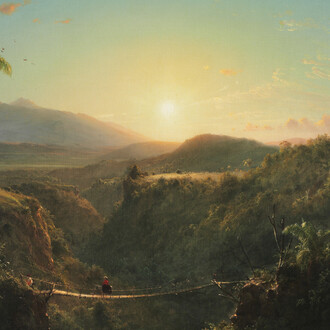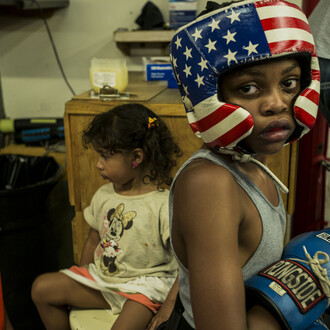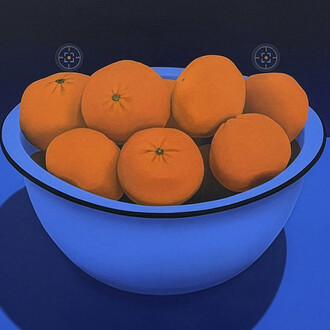Honoré Sharrer (1920 – 2009) was a major figure in the years surrounding World War II, though her commitment to leftist ideals and an alternate trajectory of surrealism put her at increasing odds with the political and artistic climate of the 1950s. Drawing on the more recent critical attention to these immediate post-war years, and, importantly, to the decades following, this exhibition considers Sharrer’s work as an important bridge between earlier practices of surrealism and its motifs, and the processes and concerns more closely associated with the Pop artists.
Subversion and Surrealism in the Art of Honoré Sharrer offers the first critical reassessment of an artist whose mature oeuvre constitutes a rich and often disquieting critique that is equal parts wit, seduction, and bite. Sharrer’s rise in the American art world was meteoric: At 18, she won a national youth art award; at 19, she was the youngest artist included in the Golden Gate Exposition; and by age 24 the critic Lincoln Kirstein had donated Sharrer’s Workers and Paintings to the Museum of Modern Art in New York. Sharrer was included in MoMA’s 14 Americans (1946), the Metropolitan Museum of Art’s Nineteen Young Americans (1950), Kirstein’s watershed Symbolic Realism in American Painting (1950), and the Whitney Museum of American Art’s The New Decade: 35 American Painters and Sculptors (1955).
Her work also garnered broad national attention: In 1949, Mademoiselle magazine selected her as “Woman Artist of the Year,” and in 1951 she was picked up by M. Knoedler & Co. with a solo exhibition of only one work, her polyptych Tribute to the American Working People (1946-51, Smithsonian American Art Museum) which garnered a flurry of national media attention.
Sharrer’s early work is grounded in the documentary observation and leftist critique of Social Realism. A vocal “fellow traveler” of the American Communist Party, Sharrer found that she, like many of her colleagues, was progressively marginalized by Cold War constraints on political dissent and the complicit masculinizing aesthetics that privileged Abstract Expressionism. Sharrer responded to these exclusionary dynamics by developing a strategy of visual subversion that, ironically, enabled her to voice an even more pointed and complex dissent than found in her early work. Her strategy was grounded in the ambiguity of surrealism to enact an unsettling interplay between seduction and subversion.
Sharrer’s use of mass and popular visual culture situates her as a bridge between the socially-engaged art of the 1940s, through the political suppression of the 1950s, to the more ironic commentary of Pop Art. Sharrer used photography early on as a fairly straightforward, though nearly obsessive, documentary system in the manner of the FSA photographers she admired. Her use of such source material developed into a complex visual archive—an extensive system of thematic folders of study photographs, AP photographs, magazine advertisements, local newspaper snap shots of business conventions and other banal fare, interspersed with sensational news images from national magazines such as Paris Match and Time, and reproductions of paintings.
The visual and conceptual conflation of Sharrer’s archives ties her particular method of surrealist non sequitur and juxtaposition to the barrage of advertisements, horrific news clips, society gossip, and other ubiquitous material culture and social convention that provided fodder for Pop Art. Sharrer’s paintings bring Elvis Presley’s mother, Marcel Proust, pin-up girls, Joseph McCarthy, Fragonard, and a Mother Goose who overflies a gaggle of bikers into a visual dialogue that probes with acerbic acumen the underbelly of the conventions that form her subject.
Subversion and Surrealism in the Art of Honoré Sharrer comprises approximately 45 paintings, plus associated sketches, drawings, photographs, and prints. The exhibition is co-curated by Melissa Wolfe, Curator of American Art at the Saint Louis Art Museum, and Robert Cozzolino, Patrick and Aimee Butler Curator of Paintings at the Minneapolis Institute of Art.
The exhibition is accompanied by a fully illustrated, scholarly catalogue with an introduction written by Sharrer’s son, Adam Zagorin, former senior correspondent for Time and current investigative journalist for a nonprofit government oversight organization.
















